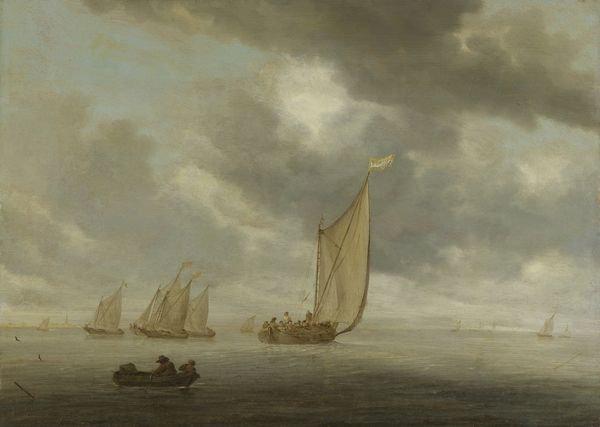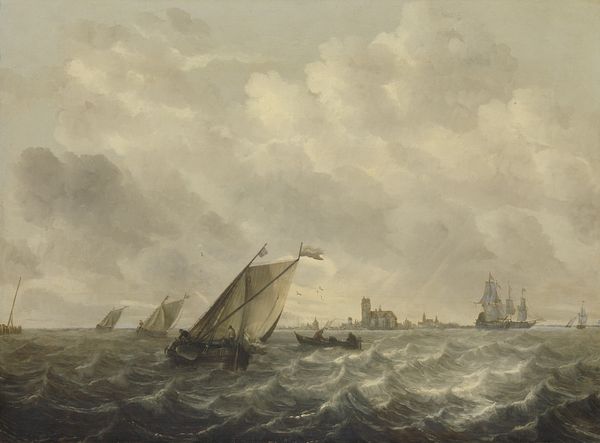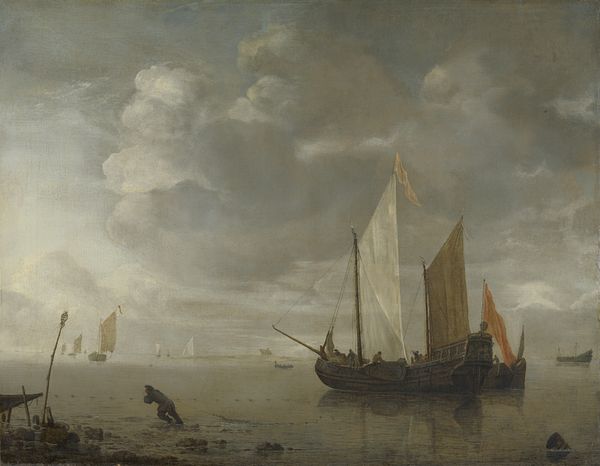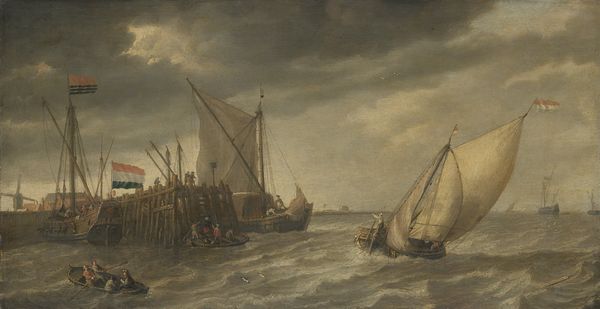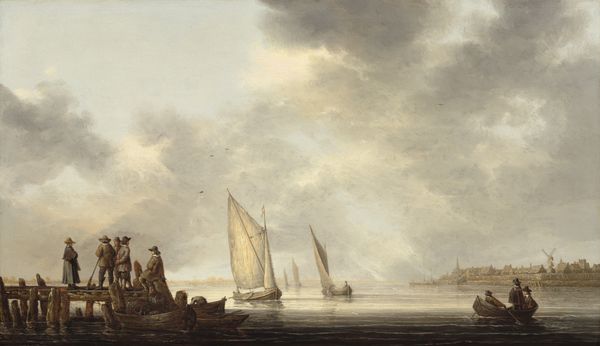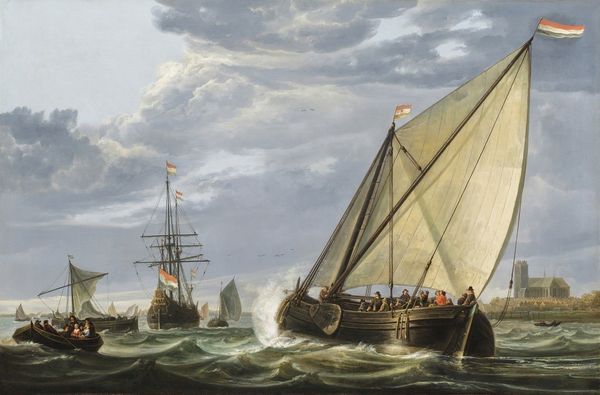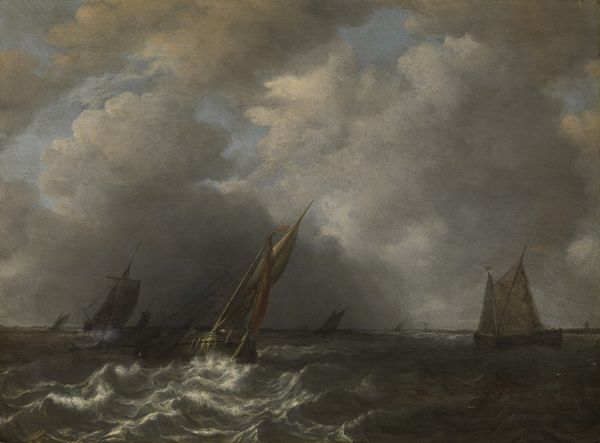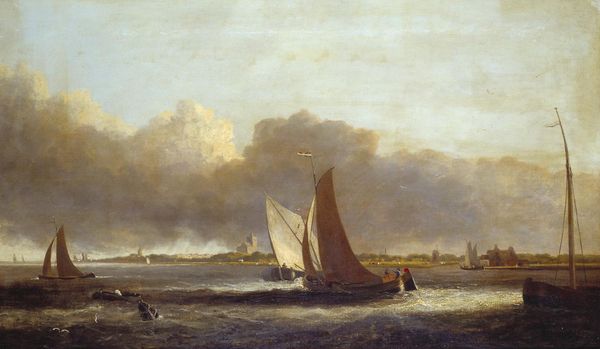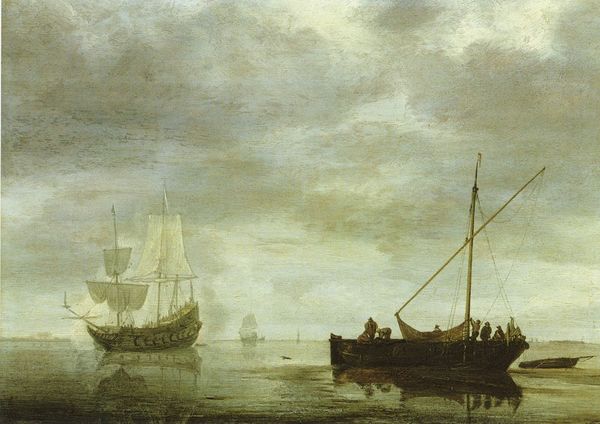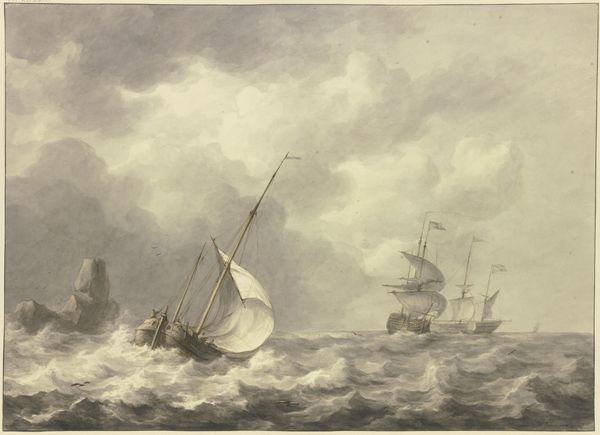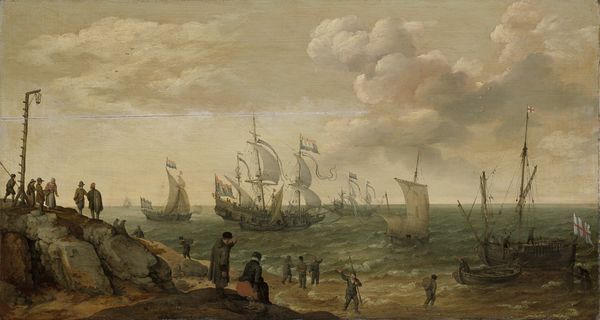
painting, oil-paint
#
baroque
#
dutch-golden-age
#
painting
#
oil-paint
#
landscape
#
charcoal drawing
#
cityscape
#
genre-painting
#
realism
Dimensions: height 47.5 cm, width 60.5 cm, thickness 3.3 cm, depth 8.6 cm
Copyright: Rijks Museum: Open Domain
Editor: We're looking at "Ships at Anchor on a Quiet Sea," an oil painting by Jan van de Cappelle, likely from between 1640 and 1679. There's this overwhelming sense of tranquility despite the industry suggested by the boats. What catches your eye when you view this painting? Curator: It's compelling to consider this work in relation to the Dutch Golden Age, a period of immense mercantile expansion. Note the muted palette. What materials would van de Cappelle have access to, and how might his patrons – often wealthy merchants themselves – have valued the representation of their shipping endeavors? Editor: That's a great point. So, the act of painting ships wasn’t just about artistry, but also reflecting the booming economy? Curator: Precisely. Think about the pigments he used – where did they come from? How were they processed? These are commodities, too, directly linked to trade and the accumulation of wealth. The paint itself embodies the same economic forces depicted on the canvas. It's a commodity, and a means of producing and celebrating commodities. Editor: It sounds like even the artistic choices, like the quiet composition, are tied to the prevailing economic conditions. Curator: Absolutely. This isn't simply a landscape; it's a carefully constructed image designed to celebrate Dutch maritime power and the affluence it generated. Notice the level of detail of the ships which appear far out at sea – likely indicating the ships involved in The East India Company trade. How does van de Cappelle visually communicate the success of Dutch trade without being overt? Editor: I suppose that making these ships at anchor almost still creates an alluring view on the labour which allowed these ships to exist, because stillness equals rest and recuperation from long voyages and hard labour, but also wealth. Curator: Exactly. By thinking about the materials, techniques, and context of this painting, we move beyond aesthetics and into the social and economic forces that shaped its creation and meaning. Editor: That connection between the materials and the subject really shifts my perspective. It’s not just a pretty picture; it’s a statement about labor and value. Thanks for opening my eyes to the materiality. Curator: My pleasure! Remembering that even something beautiful like art has its roots in labour and access reminds us of broader histories.
Comments
No comments
Be the first to comment and join the conversation on the ultimate creative platform.
